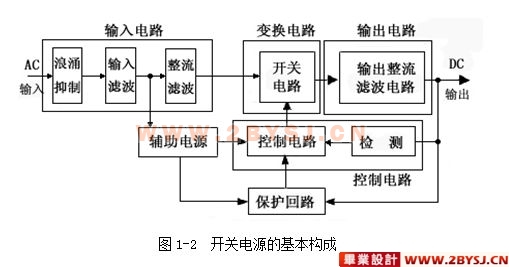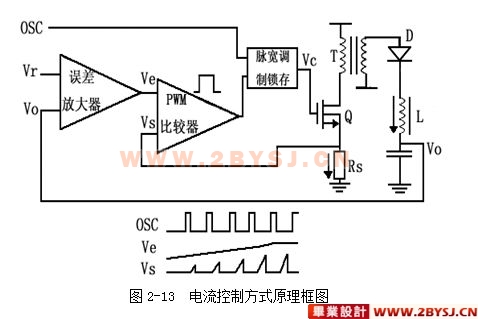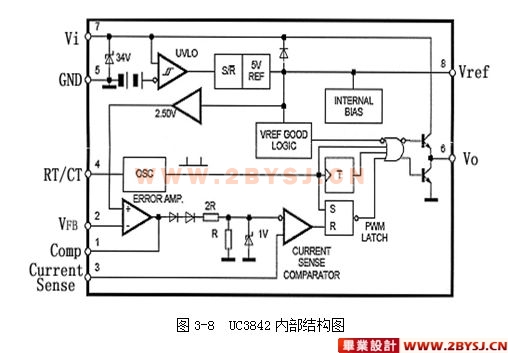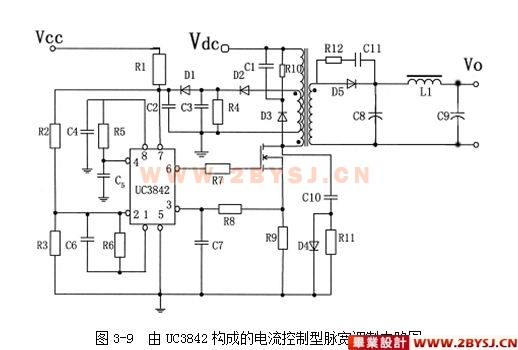开关电源应用--POS机的电源设计
无需注册登录,支付后按照提示操作即可获取该资料.
中文摘要
本文主要是通过分析并设计一款用于POS机的高效率、低功耗的开关电源适配器来介绍开关电源的优点,让更多人了解开关电源为什么能够逐渐取代线性稳压电源而得到广泛应用。该电源电路采用脉宽调制型(PWM)、电流控制模式、单端反激式工作原理,设计电路中还考虑了各种保护电路。该电源有效输入电压范围为100V~240V,输出电压为6.8V,误差范围在2%内,输出功率为34W,效率高达75%以上,是一款高效率、低成本、微型化的小功率开关电源。
在开关电源轻型化、高效化的发展历程中,集成电路技术起了决定性的作用。近20年来,集成开关电源是沿着两个方向不断发展的:一个方向是,对开关电源的核心单元——控制电路的集成;另一个方面是,对中、小功率开关电源实现单片集成化,单片开关电源实际上是一种AC/DC电源变换器。
在介绍具体的设计电路之前,本文先简单介绍了开关电源的发展历史及其工作原理,并与传统的线性稳压电源进行了比较。其次详细地对比介绍了不同的拓扑结构、调制方法、控制方式的不同特点。然后第3章详细介绍整个电路的设计思路、电路结构选择、器件选择、参数计算等一系列工作。限于篇幅,对一些辅助的电路,包括各种保护电路,如:过流、过压保护,欠压锁定电路,EMI滤波电路,补偿网络等等只做了简单的介绍。
本文除了完成原理分析和理论设计外,还得到了由本电源电路图(附录1)加工而成的实物电源,并对实物电路进行测试,分析和总结。在经过调试过程中的对电路结构的进一步修改后,电路的各项指标均达到或优于预定指标(各项指标值已附于文章最后),验证了作者的理论设计,实现了设计目标,是一次理论结合实践的大胆尝试。
关键词:开关电源,脉宽调制,电流控制模式,反激变换器,高效率
The application of switching power supply——The design of power supply for POS computer
Abstract
By analyzing and designing a high-efficiency low-power switching power supply used for the POS machine, this paper wants to tell us all about the advantages of the switching power supply, making more and more people to know why the switching power supply is going to replace the linear regulator gradually and becomes more and more popular in the power conversion arena today. The principle of this circuit is a current model control PWM flyback converter, and some protection circuits are also designed in this switching power supply. This circuit has a wide input voltage range of 100Vac to 240Vac to generate a output of 6.8Vdc,34W with error less than 2% and efficiency more than 75%, is a small-scale switching power supply of high-efficiency and low-cost.
In the development of small-scale、high-efficient switching power supply, the technology of integrated circuit take a decisive role. Over the past 20 years, the integrated switching power supply is developing in two directions: the first is the integration of the core component--control circuit; the second is integration of the small and medium scale switching power supply in a integrated circuit. In fact, the single-chip switching power supply is a AC/DC power convertor.
Before introducing the factual circuit, the author first introduces the development history and basic principle of the switching power supply in contrast to the linear regulator. The different operating principles of different circuit topologies、modulation mode and control model have been particularly analyzed after it. And then a series of tasks, such as design theory、topologies selection、components selection and parameter calculation have been expounded in chapter3. Limited by the paper and time, some assistant circuits are simply introduced, for example, over current、voltage protection circuit,under voltage locked circuit,EMI filter,compensation network and so on.
Besides the principle analysis and theoretic design,the author obtains the real switching power supply processed according to the theoretic design circuit chart in the appendix1, then the author tests the power supply and analyzes the test result. Because of the improvements of the real circuit during the test, the test result indicates that each target of the real power supply has achieved or better than the expectation(the test results enclosed in the end of the paper), verifies the theoretic design and achieves the design task. The whole progress is an energetic attempt of theory combined with practice.
Key words: Switching power supply, PWM, Current control model, High-efficiency
本文的主要工作就是为POS机设计开关电源电路。在专业开关电源设计老师的指导下,通过分析比较开关电源与传统线性稳压电源的区别,知道开关电源以其功耗小、效率高、稳压范围宽、体积小、重量轻、安全可靠等优点得到广泛应用。
通过对开关电源的工作原理,不同电路拓扑结构、调制方法、控制方式的学习比较,结合实际设计电路的性能要求及条件,为使电源结构简单、紧凑,工作可靠、减少成本,本文采用单端反激式电流控制型脉宽调制方式的原理电路模型实现了提供单组6.8V,34W的稳定输出的开关电源电路。
在专业电源设计老师及校内导师的关心指导下,本文完成了电路工作原理的分析、电路结构的选择、主要电路的设计及结果的分析总结,而由于时间及作者水平有限,实际电路的加工由专业老师帮忙完成,在此特别表示感谢!
本电源电路主要特点就是,在100V到240V的宽电压输入时,能稳定提供6.8V,34W的稳定输出,偏差小于2%,转换效率高达75%以上,而且具有短路、过压、过流保护,工作安全可靠(详细指标见附录2)。
随着开关电源技术的不断发展,更多更高效、更稳定的单片开关电源芯片不断出现,现在市面开关电源最高的可做到90%的转换效率,而且稳定度可控制在0.5%以下,另外,抗噪声干扰也是开关电源一直在改进的地方。所以,本电源电路在电路优化、电磁兼容性、转换效率及稳定度方面都可以进一步提高和完善。



目录
第一章 绪论 1
1.1 开关电源的发展及方向 1
1.1.1 线性稳压电源 1
1.1.2 开关电源 2
1.2 线性稳压电源与开关电源比较 2
1.3 开关电源的分类 3
1.4 开关电源的优越性 3
1.5 单片开关电源的发展 4
第二章 开关电源的电路原理与设计 6
2.1 开关电源的电路拓扑结构 6
2.1.1 电感、电容、二极管型 6
2.1.2 变压器耦合式直流变换电路 7
2.2 开关电源调制方法 10
2.2.1 PWM(Pulse width Modulation)调制方法 11
2.2.2 PFM(Pulse Frequency Modulation)调制方法 11
2.2.3 PSM(Pulse Skip Modulation)调制方法 12
2.2.4 三种不同调制方法比较 13
2.3 开关电源控制方式 13
2.3.1 电压控制方式 13
2.3.2 电流控制方式 14
第三章 POS机的开源设计 16
(优秀毕业设计:www.2bysj.cn)
3.1 概述 16
3.2 输入电路设计 16
3.2.1 冲击电流抑制电路设计 16
3.2.2 输入滤波电路设计 17
3.2.3 输入整流电路的设计 18
3.3 变换电路设计 19
3.3.1 变压器设计 20
3.3.2 辅助电源的设计 23
3.3.3 开关管的选择 23
3.4 控制电路的设计 26
3.4.1 UC3842构成的电流控制型脉宽调制电路 26
3.4.2 由TL431构成的输出电压检测电路 29
3.5 输出电路设计 31
3.5.1 电路结构设计 32
3.5.2 参数计算 32
3.6保护电路的设计 32
第四章 整机电路解析 34
4.1 整机电路结构解析 34
4.1.1 输入电路解析 34
4.1.2 变换电路解析 34
4.1.3 脉宽调制电路解析 35
4.1.4 输出电压检测电路解析 35
4.1.5 输出电路解析 35
4.1.6 过压保护电路解析 36
4.2 整机电路工作过程解析 36
第五章 整机电路测试与结果分析总结 37
5.1 整机电路测试 37
5.1.1 输出负载不变,输入电压变化时 37
5.1.2 输入电压不变,输出负载变化时 41
5.2 测试结果分析 43
5.3 测试总结 44
结论 45
谢辞 46
参考文献 47
附录1 POS机的开关电源原理图(6.8V,34W) 48
附录2 性能测试表 49
